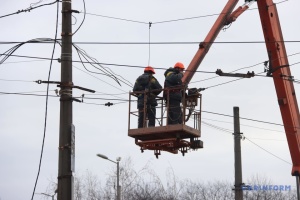
Tackling demographic, human capital challenges must be at the heart of Donbas economic recovery: World Bank’s Arup Banerji
Since 2014, conflict in Ukraine’s eastern regions has dealt a heavy blow to the region’s economy. Much has already been written on how the destruction of infrastructure in the region has led to its economic deterioration. But the human aspect of the problem is an equally, if not more, important driver of these adverse trends. A new World Bank report, The Economics of Winning Hearts and Minds: Programming Recovery in Eastern Ukraine, outlines this in detail.
Eastern Ukraine faced development challenges, especially those related to demography and human capital, from well before the conflict, with Donetsk and Luhansk Oblasts scoring relatively low in education and health indicators. The region also faced serious environmental problems – like pollution from mining and industry and social problems like high crime rates. As a result, many Donbas residents moved to neighboring regions and to Kyiv in the years preceding the conflict, in search of better living standards. It is estimated that this outflow would have been even greater if job search and housing conditions were better in their destinations around Ukraine.
When the conflict began in 2014, it only worsened these trends. In addition to imposing a catastrophic toll on human lives and destroying infrastructure, the violence drove about 1.7 million people away from their homes. This reduced the population in the region. But as importantly, it changed the age distribution. The latest statistics for internally displaced people show that younger people were more likely to move away from Donbas; they are also less likely to return to the region in the future.
Today, the region faces one of the most adverse demographic outlooks in Ukraine. The Government Controlled Areas (GCAs) in Donbas have the highest old-age-dependency ratios and unemployment rates among all Ukrainian regions. In addition, the region’s economy suffers from a serious skill-mismatch problem. While businesses suffer from a severe shortage of skilled workers, many people with more basic skills (like maintenance and assembly skills) find it challenging to land a job. This skill-mismatch problem is likely to deepen in the future. The traditional industry/mining complex in the region has largely become obsolete. As the region moves further away from these sectors, demand for higher-skilled workers will increase and that for others will decrease, in relative terms.
For these reasons, demographic and human capital challenges need to be at the center of any economic recovery effort in the Donbas GCAs. Specifically, policy proposals have to be able to provide answers to the following essential questions: How can the region attract young and dynamic generations with high skills? How can the economic participation and productivity of older generations be increased? The World Bank report highlights a number of direct and indirect measures in this regard.
On the direct measures front, desirable policies include aligning vocational schools with market conditions, boosting adult (re-)training, improving access to childcare facilities and family-friendly jobs, and increasing the effectiveness of the State Employment Service of Ukraine (including the expansion of its digital skills and jobs databases). In addition, should the uncertainties and risk emanating from the conflict persist, carefully ring-fenced social insurance provisions, including hazard pay and a mobility premium in conflict-affected areas, can be considered for priority skills.
Indirect measures cover a wide-ranging set of initiatives that can help boost economic activity in the region and ease inter-regional mobility of people (and skills). These include reforms to eliminate regulatory burdens and corruption, measures to improve the housing market to facilitate better mobility, and investments that target low-hanging fruits in infrastructure and provision of public services. These actions are indirect, and they often apply to the reform process as a whole in Ukraine. But they are absolutely necessary to make the direct measures more effective.
Finally, we must remember that reforms, to be successful, require ownership by the people who are targeted. This is particularly important when trust in top-down reforms is limited. Citizen-government engagement and community dialogue are essential at all stages of design and implementation of these measures. To win the hearts and minds of all Ukrainians, the World Bank report underlines that policies should establish the human aspects of development as the main target – and place the people themselves on the driver seat.
Arup Banerji




